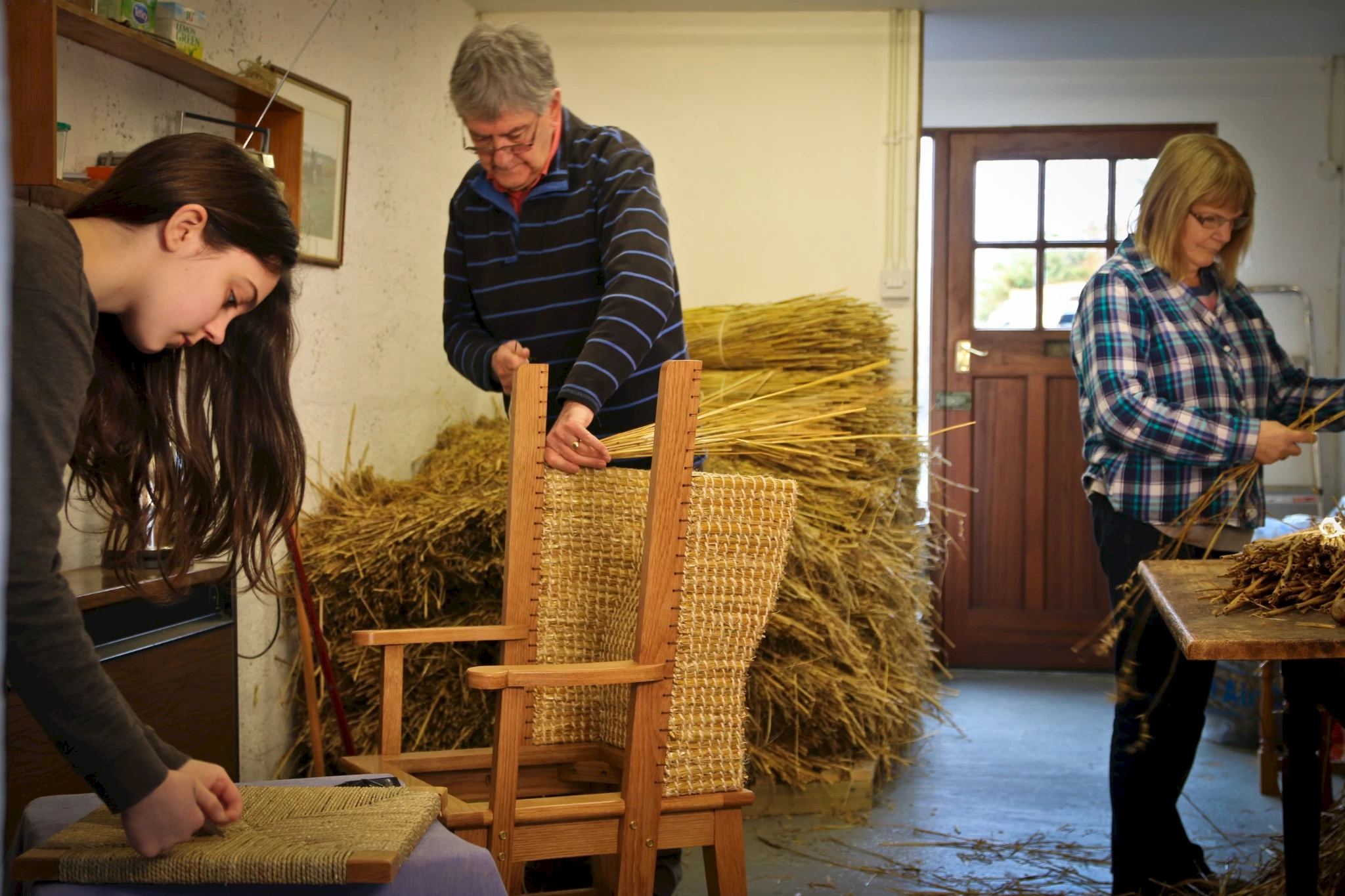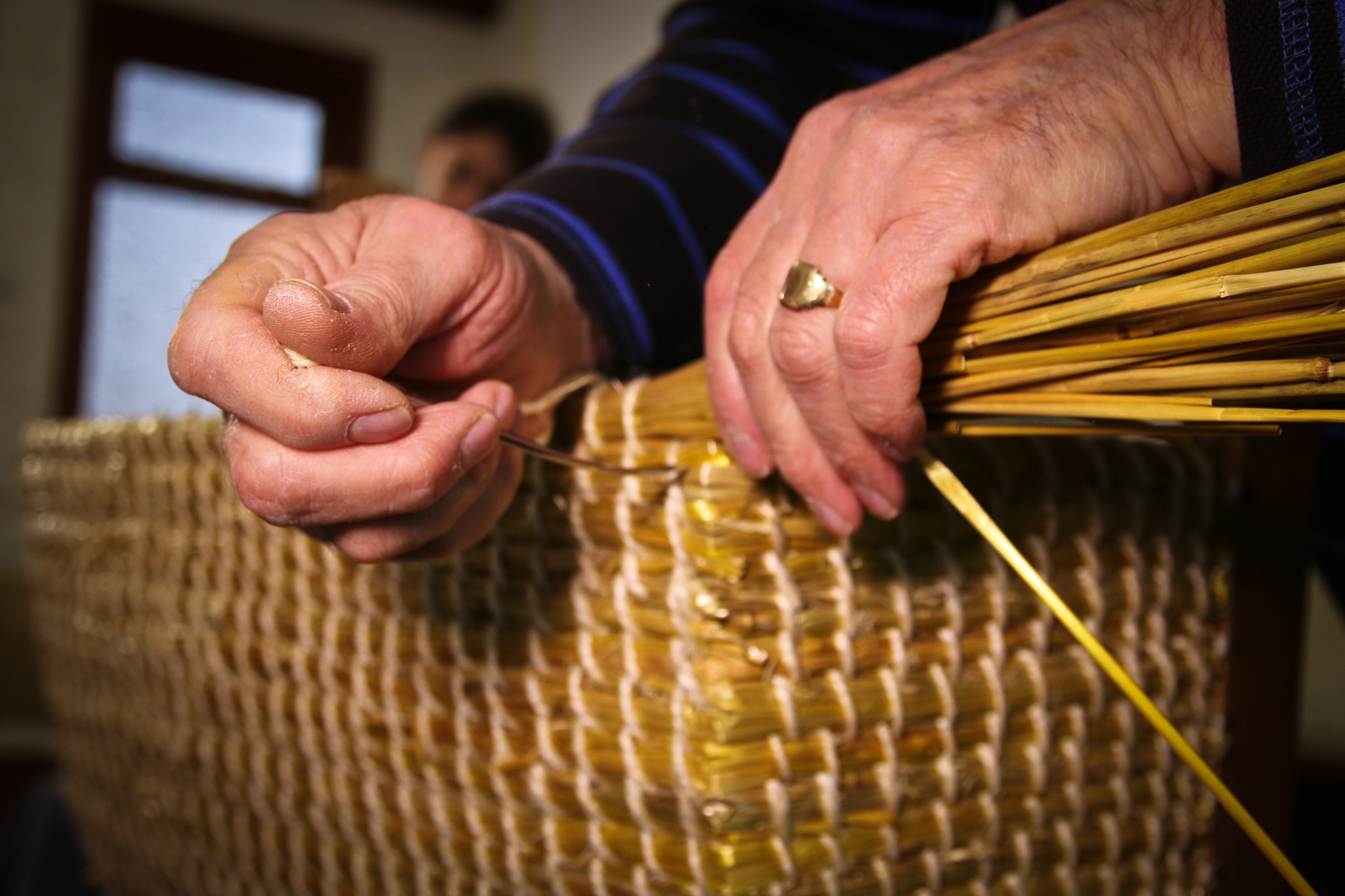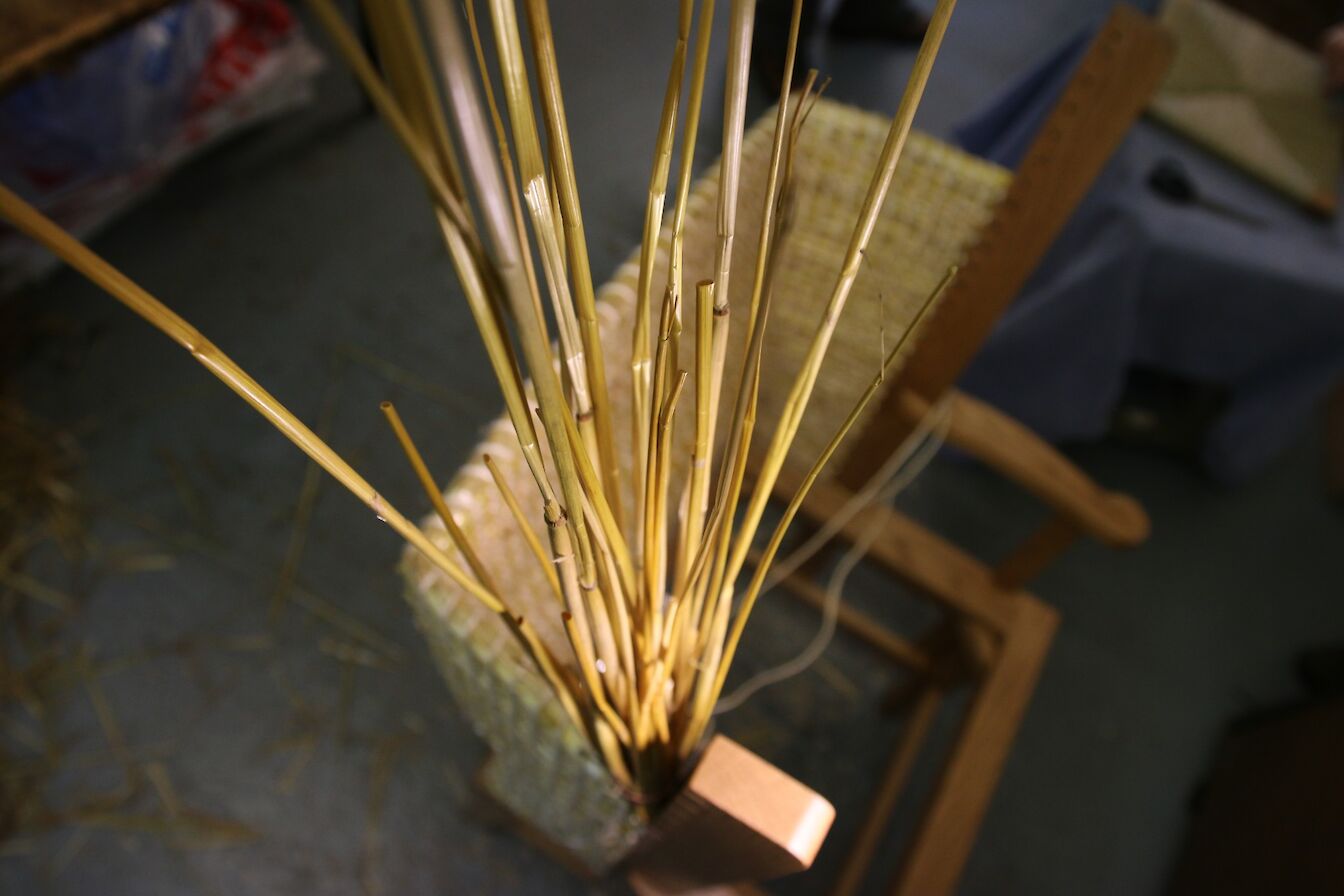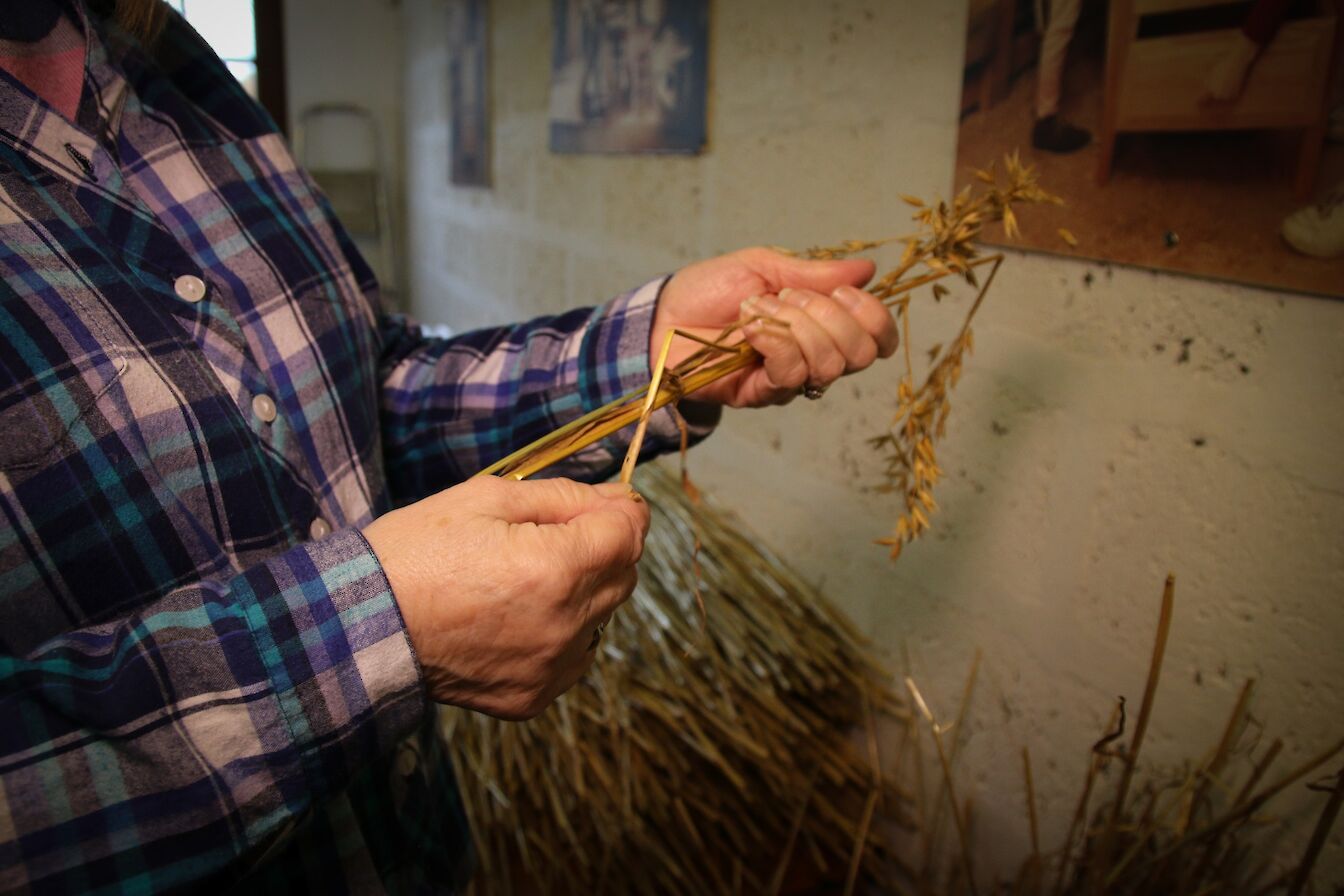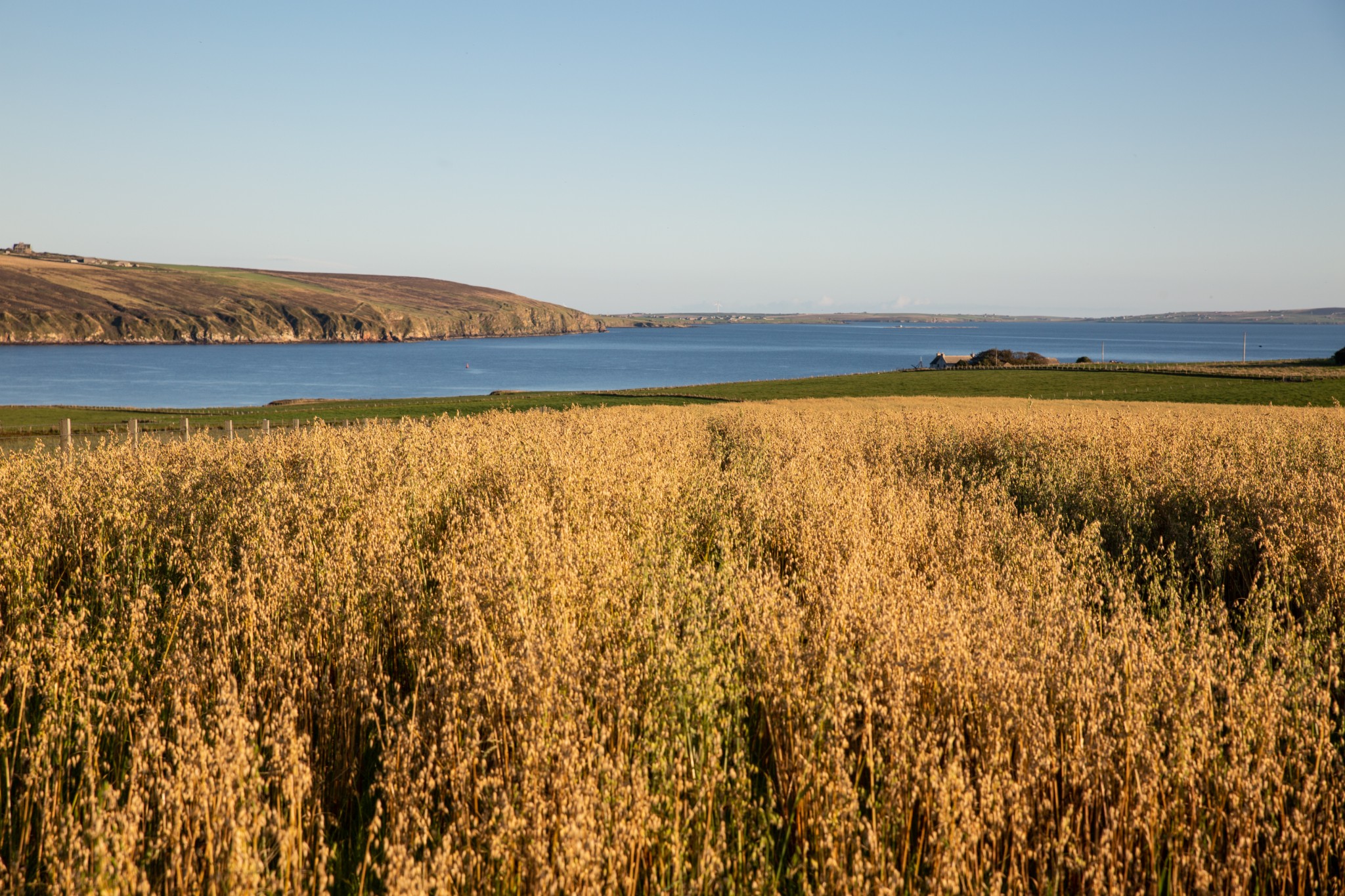Our latest 'Introducing Orkney's Makers' feature takes a closer look at the story of local furniture makers, Scapa Crafts.
How did you get into Orkney chair-making?
My lifelong interest in Orkney chairs was sparked as a child growing up on a croft on the island of Eday. Straw work was part of our daily island life and this natural material was used to make chairs, ‘cubbies’ (baskets) and mattresses. I’d watch my grandfather and father working with straw and dreamt I’d one day do the same, so it was always in my blood. I got the opportunity to make straw backs for Orkney chairs in the late 80s, found I loved the work and, in 1993, I set up Scapa Crafts with my wife, Marlene. I’ve never looked back!
Was it a difficult craft to master?
It does take a fair bit of practice, but like all these traditional skills, it’s something you can’t rush. In time, you learn how best to work in harmony with the natural materials. Your fingers get a lot tougher too!
Why did the design of the straw-backed chair first emerge in Orkney?
It’s a combination of things, from our lack of trees to the nature of crofting communities, where making furniture from whatever materials could be found was a necessity. Buying furniture would have been considered an extravagant expense which a crofting family could ill-afford.
Equally, Orkney’s houses in previous centuries did not benefit from the luxuries of modern heating systems and the old traditional stone cottages could be both draughty and cold, particularly during stormy winters. The Orkney chair’s straw backs would have helped keep the occupant cosy inside! Folk were also used to working with straw, which was readily available and perfect for creating chair backs and other essential items.
It looks like a very work-intensive process. How long does it take to make an individual chair?
Our frames take a least a week to create in a process that involves the fitting together of over 30 different pieces of wood, all with handcrafted dovetailed joints. Each frame is then meticulously sanded to ensure the smoothest of finishes, before being treated with natural oils and waxes to bring out the colours of the woods.
It also takes about 12 hours to clean the three to four sheaves of straw required for a chair back, and 24 hours to clean the seven to eight sheaves needed for a chair with a hood. Each chair back requires around 200 stitches, all done by hand. In all, you’re looking at about two to three weeks to complete a chair.
Was this an art that was in danger of dying out at one time?
While the numbers of makers has dropped over the years, I honestly don’t believe it was ever a tradition that was in real danger of dying out. There’s too much pride locally in the Orkney chair and always someone willing to carry on this important tradition.
The straw itself is grown especially for the purpose - can it be hard to source?
Orkney’s mild climate and sea air produces long, fine and golden oat straw which is perfect for use on our chairs, and we’re fortunate to have a good local supply. Our straw is all harvested using a traditional binder or scythe which ensures the stalks remain as long and unbroken as possible.
Straw also deepens in colour as it ages, so we never mix straws from different seasons. This avoids colour inconsistencies in our chair backs.
The Orkney chair is now considered to be a design classic. How far afield do you send your work?
Our chairs go all over the world, to private homes, castles, galleries and museums. International interest in Orkney chairs has really increased over the years, but they’re still firm favourites with local folk too. No Orkney home is complete without an Orkney chair!
You obviously have set designs that you work to, but the nature of the materials must mean that every piece is individual?
Our chairs are based on an old Orcadian design which we’ve sympathetically developed over the years to create our signature style, but the grains and colours of the different woods we use do mean each chair is unique. The driftwood chairs in particular are complete one-offs.
As an Orcadian, how important is it to you to keep this tradition going?
It’s hugely important to me and my family – my daughters and grandchildren help out in the business and we’ve got younger craftsmen working with us too. The Orkney chair is iconic and instantly recognisable the world over. They’re also symbolic of the qualities Orkney is known for – quality, integrity, attention to detail and passion for artisanal heritage, so it’s vital we continue this work.
Find out more about Scapa Crafts via the official website.
Shop online for Orkney crafts products.
The Promoting Orkney project has been part financed by the Scottish Government and the European Community Orkney LEADER 2014-2020
